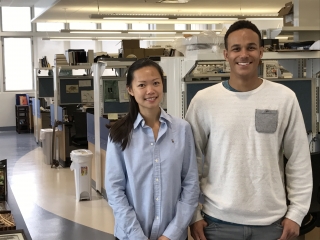Neuronas o árboles?
The main taste organ of the fruit fly (Drosophila melanogaster) is the labellum, which is equivalent to the human tongue. The labellum has two sponge-like lobes used to collect food. Within the lobes are branching neurons important for detecting toxic substances flies must avoid to survive.
This work is inspired by Santiago Ramón y Cajal, who is the father of modern neuroscience. Immunohistochemistry was performed on labella dissected from adult flies. This technique allows for selective imaging of antigens (e.g. proteins) in tissues by using specific antibodies. The flies contain a transgene that allows for expression of green fluorescent protein in TRPA1-expressing gustatory receptor neurons. The fluorescent signal was amplified using an antibody against green fluorescent protein. The image was acquired by confocal microscopy using the Zeiss LSM 700, and processed using ImageJ and Prisma (mosaic filter).


